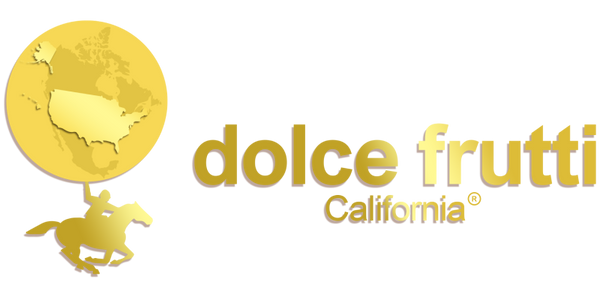At Dolce Frutti, we have always been fascinated by the fruits which carry much more than just flavor- they carry history. And when we talk about such fruits, Temple orange just pops up instantly into the canvas of our mind.
Their bold flavor, vibrant color, and quite unique shape often cause consumers to think about the history of Temple oranges. Well, the answer is a flavorful story from over a hundred years ago. Let’s jump into it to understand What is the history of the Temple orange, and how they became a universal favorite.

What Is a Temple Orange?
Temple oranges are pictured as a fruit slightly smaller in size than the classic Navel oranges. They possess a deep orange color, are easy to peel, and super-juicy to eat. Also known as Temple Tangors, this Temple mandarin hybrid is a cross-over between tangerine and sweet oranges which are grown organically through permaculture practices in our farms in Southern California’s Coachella Valley, offering a rich aroma and refreshingly tangy flavor. Unlike most of the citrus varieties, the Temple Oranges are seedless or close to that, making the eating experience wholesome and smooth.

History of Temple Oranges
1. Discovery in Jamaica (Late 1800s)
The history of Temple oranges dates back to 1896 in Jamaica, where farmers noticed a tree producing fruits unlike the typical oranges. These fruits had a deep orange skin, rich aroma, and a sweet-tart taste found nowhere else. This made early horticulturists realize the potential Temple mandarins had and took cuttings, spreading the variety to new regions.
2. Naming and Early Commercial Growth (Early 1900s)
Temple oranges continued to be sold as an unnamed fruit until they finally got a proper name in the early 20th century after a leading citrus cultivator, William Chase Temple.
He was a person who enabled railroad shipments to the northern states. Thus, introducing the fruit to a wider audience than before.
3. Golden Era in Florida (Mid 1900s - Early 2000s)
Through the mid-20th century, Temple oranges have become a staple in Florida’s citrus industry. Getting featured in festivals, school lunches, and local markets, they were literally everywhere. The bright color and range of sweet flavor made them a winter favorite across the country.
4. Modern Challenges (Late 1900s–Present)
The late 20th and early 21st centuries brought new challenges. Seedless oranges gained popularity, changing consumer demand. Citrus greening disease and other agricultural pressures reduced Temple orange production. Despite these obstacles, dedicated growers preserved the variety, keeping the legacy alive for enthusiasts and specialty markets. At Dolce Frutti, we proudly continue this tradition by cultivating Temple oranges organically through permaculture practices in Southern California’s Coachella Valley, ensuring that every fruit carries both heritage and purity in every bite.
Why Temple Oranges are a Must Try?
A study published by National Library of Medicine in 2015, states that Temple oranges have a higher citric and malic acids at early growth stages.Furthermore, they have almost 21 times more vitamin C than some other tangors like Murcott and over 108 aroma compounds that give them a rich fragrance.
Where to buy the Best Temple Oranges Today?
Finding authentic and fresh Temple oranges today can be quite a challenging task. With their limited production and an immense decline in growing regions, many of the Temple oranges you see in mass markets are either imported or stored in cold warehouses. As a result, they lose their natural aroma and nutritional value. At Dolce Frutti, however, we do things differently. Our Temple oranges are cultivated in small batches in Southern California’s Coachella Valley through permaculture. Furthermore, they are grown organically with no chemicals, no herbicides, no pesticides, no cold storage, and no mass production to ensure what you get is a pure blessing of nature- bursting with nutrients and flavor.

Conclusion
The Temple orange's history is one of flavor, heritage, and resilience. From their origin as a Temple mandarin hybrid in Jamaica to becoming a global favorite, the fruit has come a really long way.
At Dolce Frutti, we are fascinated by the way fruits like Temple oranges connect farming traditions with the joy of fresh, flavorful produce and a rich history. Whether enjoyed fresh from the peel or in your favorite recipe, they’re proof that great taste never goes out of style.

